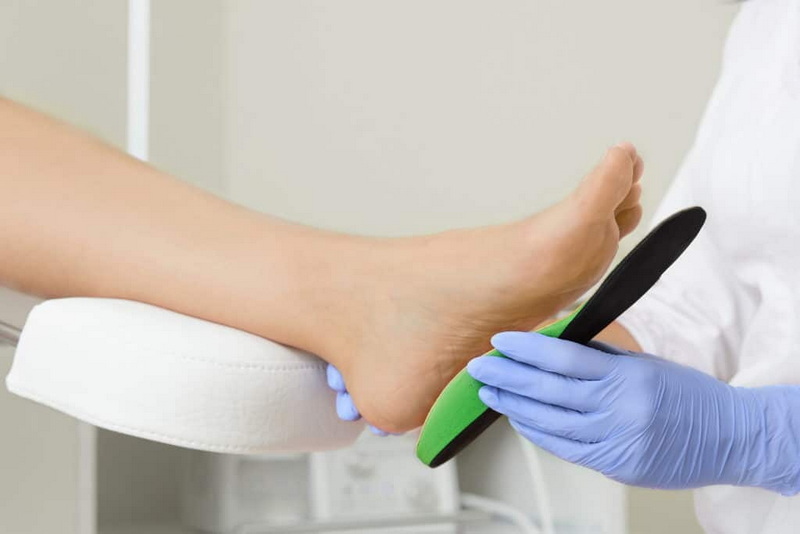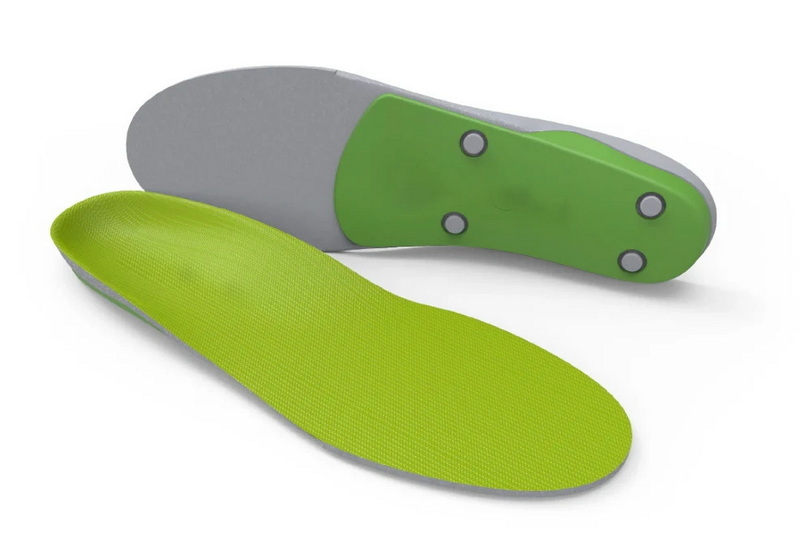Views: 222 Author: Edvo Publish Time: 2025-11-15 Origin: Site











Content Menu
● What Are Custom Fit Orthotic Inserts?
>> Key Features of Custom Orthotics
● How Custom Fit Orthotic Inserts Help Sciatica
● The Manufacturing Process of Custom Fit Orthotic Inserts
● Custom Fit Orthotic Inserts vs. Standard Insoles
● Who Is Most Likely to Benefit?
● Tips for Selecting the Best Custom Orthotic Inserts
>> 2. Choose the Right Material
>> 3. Verify Manufacturer Credentials
>> 4. Ensure Footwear Compatibility
>> 5. Prioritize After-Sales Support
● Debunking Misconceptions about Orthotic Inserts and Sciatica
● The OEM Advantage for Global Brands
● Case Studies and User Experiences
● Maintenance and Longevity of Custom Orthotic Inserts
>> 1. Do custom fit orthotic inserts actually help sciatica?
>> 2. How long does it take to feel relief after switching to custom orthotic inserts?
>> 3. Can custom fit orthotic inserts be used in any shoe?
>> 4. Are there any risks associated with orthotic inserts?
>> 5. Are custom orthotic inserts more effective than standard insoles?
Sciatica is a widespread and often debilitating condition impacting the lower back, hips, and legs. With millions suffering globally, the search for reliable relief is ever-growing. Custom fit orthotic inserts are gaining attention for their potential to ease sciatica discomfort through biomechanical correction and advanced shock absorption. But are these inserts truly effective for sciatica? This article takes an in-depth look at their science, benefits, manufacturing process, and market opportunities, with guidance for international OEM buyers, brand owners, and wholesalers.

Sciatica refers to pain caused by irritation or compression of the sciatic nerve, typically radiating from the lower spine through the buttocks and down the back of the leg. Rather than being a diagnosis itself, sciatica is a symptom resulting from underlying conditions such as herniated discs, spinal stenosis, degenerative disc disease, piriformis syndrome, or even certain injuries. This pain may be sharp, burning, or accompanied by numbness, muscle weakness, and tingling in the affected limb.
A key aspect of managing sciatica is identifying triggers, which often include improper posture, prolonged sitting or standing, certain repetitive activities, and biomechanical abnormalities in the foot or gait. Left untreated, sciatica can become chronic, influencing quality of life and productivity. Hence, exploring accessible, practical solutions is critical for sufferers and manufacturers alike.
Custom fit orthotic inserts are personalized insoles designed to conform precisely to an individual's foot contours, gait, and pressure points. They are distinguished from generic store-bought insoles by their advanced fabrication process, which may involve 3D scanning, foot impressions, or digital modeling. These inserts go beyond simple cushioning, offering features such as arch reinforcement, a stabilizing heel cup, and multi-density layers for targeted support.
The primary objective of custom orthotics is to realign and balance the lower limb's kinetic chain—feet, knees, hips, and lower back. By correcting overpronation (excessive inward rolling) or supination (outward rolling), orthotic inserts help distribute body weight more evenly, absorbing shocks and minimizing strain on sensitive nerves and joints.
- Precise arch support tailored to foot anatomy
- Bio-mechanical correction for even weight distribution
- Shock-absorbing cushioning to minimize ground impact
- Durable, moisture-wicking, and hypoallergenic materials
- Enhanced comfort for daily and athletic use
In contrast, mass-produced insoles deliver limited benefits due to their one-size-fits-all nature and lack of custom engineering.
Many cases of sciatica have roots in postural issues and biomechanical misalignments. When the feet are unsupported or misaligned, stress travels up through the legs, hips, and lower spine—over time, this misalignment can directly aggravate the sciatic nerve. Custom orthotic inserts address this issue by correcting foot posture at its source.
1. Alignment Correction: By maintaining natural foot alignment, custom inserts stabilize the ankle and reduce rotational strain on knees and hips, minimizing pressure on the lower back and sciatic nerve.
2. Shock Absorption: Advanced materials cushion each step, diffusing the impact that would otherwise reverberate through the vertebral column, which is especially beneficial on hard surfaces or during high-intensity activities.
3. Reduced Compensatory Movements: With proper support, the body is less likely to compensate for pain or imbalance through awkward movements that worsen sciatica or trigger secondary injuries.
4. Enhanced Mobility: With pain reduced and movement optimized, users experience greater ease in walking, standing, and exercising—key factors in long-term nerve health.
These benefits make custom fit orthotic inserts a recommended supportive intervention, either as a standalone solution or as part of a broader treatment strategy for chronic sciatic pain.
Chinese manufacturers have emerged as leaders in the orthotic insert market, leveraging technology and large-scale OEM capacity to serve international brands. The custom insole production process typically encompasses:
1. Foot Assessment and Data Collection: A precise 3D scan or digital analysis captures your foot shape, pressure distribution, and gait pattern.
2. CAD Design: Expert technicians use computer-aided design software to generate a virtual model of the perfect insert, tailored for each customer's anatomical features and specific needs.
3. Material Selection: Manufacturers offer a range of options—EVA foam for firmness, memory foam for comfort, gel for superior shock absorption, or even eco-friendly castor-oil-based polymers as sustainable alternatives.
4. CNC Cutting and Forming: Automated CNC machining or thermoforming processes cut the chosen material to exact dimensions, ensuring an impeccable fit.
5. Assembly, Layering, and Finishing: Inserts may include multi-density layers, antimicrobial top-covers, and ventilation features, then are assembled, checked, and cut for final shaping.
6. Quality Control: Every insert undergoes strict testing for firmness, fit, resilience, and compliance with international standards.
7. Branding and Packaging: For OEM clients, inserts may be branded, color-customized, and packaged as per their unique marketing requirements.
Custom insole manufacturing not only delivers superior foot health benefits, but also gives international brands a means to differentiate themselves in a highly competitive marketplace.

To understand the real benefits, it's important to compare custom fit orthotic inserts with mass-market insoles:
| Feature | Standard Insoles | Custom Orthotic Inserts |
|---|---|---|
| Fit | Generic shape | Personalized to foot |
| Arch Support | Minimal or none | Tailored to user’s arch height |
| Shock Absorption | Basic, uniform | Optimized for individual pressure areas |
| Longevity | Short-term use | Long-lasting, high-quality materials |
| Comfort | Moderate | Superior, even after long hours |
| Effectiveness for Sciatica | Limited | High |
| OEM Branding | Generic | Customizable for any market |
The take-home message is clear: custom orthotics offer unmatched support for sciatica suffers, combining science, comfort, and commercial flexibility.
Certain individuals have a higher likelihood of experiencing sciatic relief with custom orthotic inserts:
- People with abnormal foot mechanics (flat feet, high arches)
- Athletes involved in impact-heavy or endurance sports
- Workers who stand or walk for extended periods (manufacturing, healthcare, hospitality)
- Seniors with age-related musculoskeletal degeneration
- Anyone with persistent or recurrent lower back and leg pain
Orthotic customization enables a targeted approach, making relief more achievable for a diverse range of lifestyles and user profiles.
Always consult a qualified podiatrist or orthopedic professional before investing in orthotics, especially if you have underlying health issues. Medical evaluation ensures inserts address the real cause of symptoms.
Select materials based on your lifestyle, shoe type, and desired firmness. EVA foams provide robust support for high activity, while memory foam is suitable for all-day cushioning.
Check that your manufacturer demonstrates expertise and complies with international quality standards. Reputable OEM suppliers offer medical-grade inserts certified by relevant authorities.
Orthotics must work with everyday footwear choices—dress shoes, sneakers, work boots—to ensure consistent benefit without discomfort or bulk.
Offering customer-friendly exchange, adjustment, or support policies can be vital for long-term customer satisfaction and brand loyalty.
- They provide instant cure: Custom orthotics are a supportive solution, and while they may offer immediate comfort, significant sciatica relief often requires several weeks of consistent use.
- One pair fits all: Effective orthotics must be tailored to individual feet, conditions, and activity levels; one-size-fits-all options are unlikely to provide true relief.
- Expensive equals better: The best insert matches your needs and anatomy, not necessarily the highest price tag.
- Only athletes benefit: Prolonged standing, walking, or even sedentary office work are all risk factors, making custom orthotics beneficial for people of diverse backgrounds.
For international companies and wholesalers, partnering with expert Chinese factories for OEM orthotic insert production delivers significant market advantages:
- Access to advanced R&D and technology for the latest ergonomic designs
- Volume production to meet demand at scale with consistent quality
- Custom branding, color options, and packaging for any target market
- Specialized products for medical, sport, or industrial applications
By collaborating closely with manufacturers, overseas brands can expand their health product portfolio and satisfy the evolving demands of health-conscious consumers.
Thousands report tangible improvement in sciatic symptoms after switching to custom fit orthotic inserts. Many note reduced daily pain, the ability to walk longer without discomfort, and a return to previously avoided activities. Athletes often highlight improved performance linked to better biomechanical support, while seniors value greater independence and ease in mobility.
Corporate feedback from retailers suggests that custom-branded orthotics improve customer retention and satisfaction, encourage repeat purchases, and strengthen brand reputation in the wellness market.
Proper care is paramount to optimizing the lifespan and effectiveness of your custom inserts:
- Clean regularly with mild soap and water—avoid soaking or exposing to extreme heat.
- Inspect periodically for signs of wear, flattening, or damage.
- Replace insoles as recommended, typically every 12–24 months depending on usage and activity levels.
- Rotate between two pairs for daily users to maximize durability.
Well-maintained orthotics ensure sustained support and ongoing relief, promoting both foot and spinal health over the long term.
Custom fit orthotic inserts offer a robust, science-backed option for many individuals suffering from sciatica. Through personalized alignment, advanced material technology, and shock absorption, these insoles mitigate pain, boost mobility, and offer comfort even after long hours on your feet. For international brands and wholesalers, collaboration with leading OEM manufacturers unlocks the potential for differentiated, high-value wellness products. Always prioritize medically sound designs and consult professionals to maximize benefits and minimize risks. With continued advancement in digital fitting and material science, custom orthotic inserts are set to remain a foundational tool in sciatica relief and foot health for years to come.

Custom fit orthotic inserts may significantly help alleviate sciatica by correcting foot posture, supporting proper body alignment, and reducing stress transmitted to the lower back and sciatic nerve. While not a cure, consistent use can lower pain levels and improve daily function.
Most people experience noticeable pain relief and improved comfort within two to six weeks of regular use. The duration depends on the severity of sciatica, overall health, and adherence to a comprehensive management plan.
Custom fit orthotic inserts can be manufactured in a variety of thicknesses and shapes for compatibility with athletic shoes, casual footwear, work boots, or even sandals, subject to design limitations.
Risks are minimal if the inserts are properly prescribed and fitted. Poorly designed or incorrectly fitted insoles might worsen symptoms, so professional guidance is recommended.
Yes, custom orthotic inserts provide personalized biomechanical support that standard, generic insoles cannot match, leading to greater sciatica relief and overall comfort.